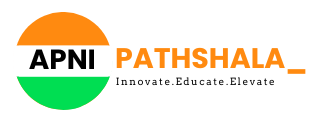In today’s digital age, having a grasp of technology is essential for success in almost every field. For students, learning to code not only enhances their digital literacy but also fosters creativity, problem-solving skills, and logical thinking. One platform that has revolutionized programming education, especially for beginners, is Scratch. With its intuitive block-based interface, Scratch allows students to create interactive stories, animations, and games without the need for prior coding experience.
In this beginner’s guide, we’ll dive into the exciting world of Scratch game development, empowering students to unleash their creativity and develop essential digital literacy skills along the way.
Why Scratch?
Scratch is an ideal starting point for students interested in programming for several reasons:
Simplicity: Scratch’s block-based interface eliminates the complexities of syntax and allows students to focus on the logic of programming.
Visual Feedback: Instant visual feedback encourages experimentation and enables students to see the immediate results of their coding decisions.
Community Support: Scratch boasts a vibrant online community where students can share their projects, learn from others, and collaborate on creative endeavors.
Learning Scratch in Maharashtra
In Maharashtra, the Zilla Parishad school students, particularly in Virar, are actively engaged in learning Scratch through a collaboration between the Apni Pathshala organization and the Narayanchandra Trust. This collaboration aims to bring modern technological education to government school students, offering them opportunities to develop digital literacy skills and explore the world of coding in a supportive environment.
Getting Started
To begin your Scratch game development journey, follow these simple steps:
Sign Up: Visit the Scratch website and sign up for a free account. This will allow you to save your projects and share them with others.
Explore Tutorials: Scratch offers a variety of tutorials and resources designed specifically for beginners. Start with the introductory tutorials to familiarize yourself with the platform’s features and capabilities.
Choose a Project: Think about the type of game you want to create. Whether it’s a platformer, puzzle game, or interactive story, Scratch provides the tools you need to bring your ideas to life.
Start Coding: Using Scratch’s drag-and-drop blocks, begin coding your game’s functionality. Experiment with different blocks to control movement, interactions, and game logic.
Add Sprites and Backgrounds: Customize your game by adding sprites (characters or objects) and backgrounds. Scratch provides a library of assets to choose from, or you can create your own using the built-in editor.
Test and Iterate: Test your game frequently to identify bugs and areas for improvement. Don’t be afraid to iterate on your design and make adjustments based on feedback from friends, family, or fellow Scratch users.
Share Your Game: Once your game is complete, share it with the Scratch community by publishing it on the platform. Receive feedback, explore other projects, and continue to learn and grow as a game developer.
Absolutely! While Scratch is commonly used for creating games, it's also suitable for a wide range of projects, including animations, simulations, interactive art, and educational tools.
No prior coding experience is required to use Scratch. Its block-based interface is designed to be accessible to beginners, making it an excellent introduction to programming concepts.
Yes, Scratch allows for collaboration through its online platform. You can remix and build upon other users' projects, share your own work for others to remix, and even collaborate in real-time using the cloud-based Scratch editor.
Yes, Scratch is completely free to use. Simply sign up for an account on the Scratch website to access all of its features and resources.
Set goals for yourself, celebrate small victories, and don't be afraid to experiment and explore new ideas. Engage with the Scratch community for inspiration, feedback, and support along your learning journey.
Conclusion
Scratch game development offers students a fun and engaging way to develop crucial digital literacy skills while unleashing their creativity. With initiatives like the collaboration between the Apni Pathshala organization, the Narayanhandra Trust, and Zilla Parishad schools in Maharashtra, students have the opportunity to access modern technological education and explore coding in a supportive environment. By following this beginner’s guide, exploring tutorials, and tapping into the vast resources available on the Scratch platform, students can embark on a rewarding journey of self-expression and learning through coding. So what are you waiting for? Start coding and let your imagination run wild!


